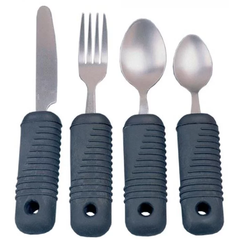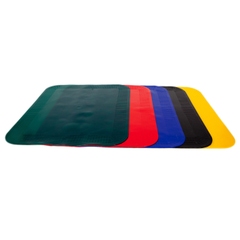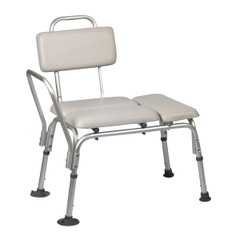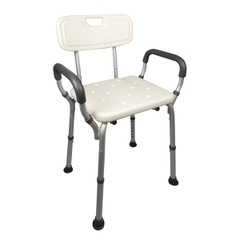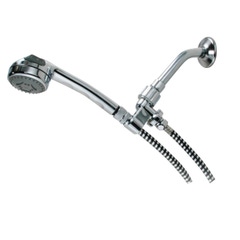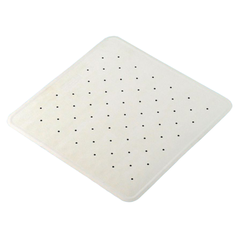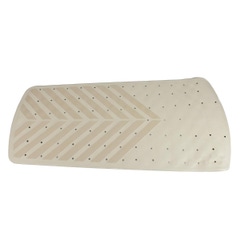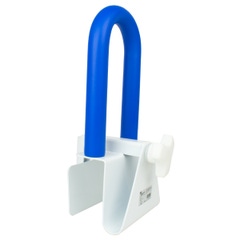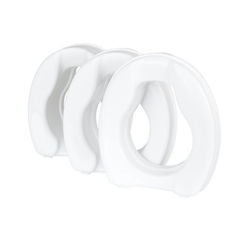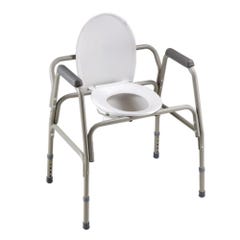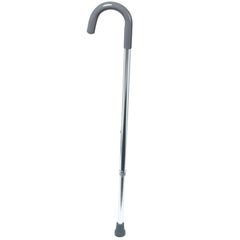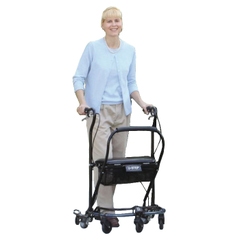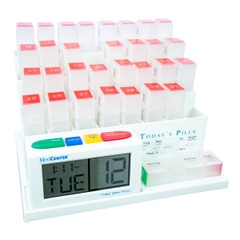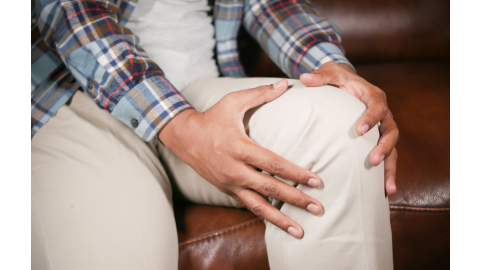Looking for information on Parkinson’s disease? You’re in the right place. Learn all the basics in this brief guide and talk to your doctor for more information.
What is Parkinson’s disease?
Parkinson’s disease is a neurodegenerative disease that primarily affects movement.1 It’s a progressive nervous system disease which mean the symptoms start gradually and progress through five stages. The diversity of the disease means that everyone with Parkinson’s disease doesn’t experience the same symptoms or symptom progression.
Who has Parkinson’s disease?
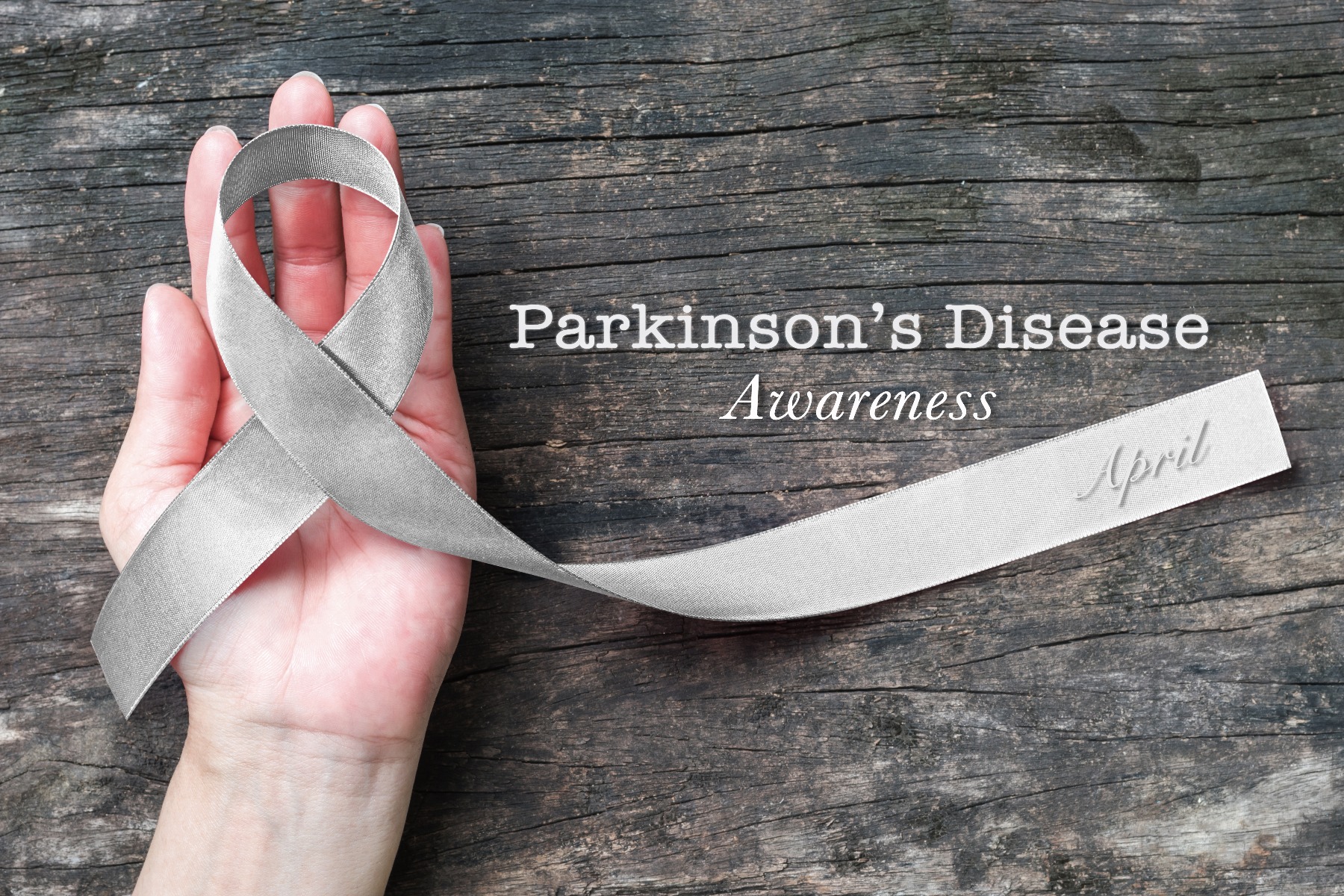
Get the Facts2
- Nearly 1 million people in the U.S. and more than 10 million people worldwide are living with Parkinson’s disease
- Men are 1.5x more likely to have Parkinson’s disease than women
- The number of people diagnosed with Parkinson’s increases with age, but ~4% of people were diagnosed before age 50
What are the symptoms of Parkinson’s disease?
Symptoms of Parkinson’s disease can vary based on the individual. Symptoms often begin on one side of the body and then spread to the other side. It is common for symptoms to remain worse on the side of the body where they began.

Parkinson’s symptoms may include:
- Tremor
- Shaking that occurs mainly when at rest and often begins in the hand or fingers
- You may have a pill-rolling tremor which means you rub your thumb and forefinger back and forth
- Bradykinesia
- Slowed movement that can make tasks like walking more time consuming or difficult
- Can make it challenging to get out of a chair
- Can make your steps shorted or cause you to drag your feet when walking
- Limb Rigidity
- Muscle stiffness in the arms or legs can be painful and limit your range of motion
- Gait and Balance Problems
- You may have problems with balance, including while walking
- Loss of Automatic Movements
- Your ability to perform unconscious, automatic movements may decrease (including smiling, blinking, or swinging your arms while walking)
- Speech or Writing Changes
- You might speak more softly, slur, or hesitate before talking
- Your voice may become more monotone and lose its normal inflections
- You may struggle with writing or write in smaller print
What are the causes of Parkinson’s disease?
The exact cause of Parkinson’s disease is unknown. Both genes and environmental triggers seem to cause a small increase in risk.
More is known about what happens in the brain when someone has Parkinson’s. Certain nerve cells in the brain break down and die. Some of these neurons that are lost produce dopamine a chemical messenger in the brain. With lower levels of dopamine, abnormal brain activity occurs including those that lead to Parkinson’s symptoms like tremor and impaired movement.
Researchers have found other changes in the brains of people with Parkinson’s including the presence of Lewy bodies within brain cells and the presence of alpha-synuclein protein (a-synuclein) in the Lewy bodies that cells can’t break down. A-synuclein is the focus of many Parkinson's disease researchers.
What are the stages of Parkinson’s disease?
Parkinson’s disease is divided into five stages. All people with Parkinson’s disease don’t experience the same symptoms or the same severity of symptoms, but this is the typical progression of the disease.
- Stage One
- Mild symptoms don’t interfere with daily life
- Tremors and movement symptoms only occur on one side of the body
- Changes in posture, walking, and facial expressions may occur
- Stage Two
- Symptoms cause daily tasks to become more difficult, but the person can still live independently
- Tremor, rigidity, and other movement symptoms affect both sides of the body
- Walking and posture problems are more evident
- Stage Three
- At the mid-stage, the person is still independent, but symptoms severely impact daily living
- Falls are more common
- Dressing and eating is difficult
- Loss of balance and slowness of movements are common
- Stage Four
- The person is unable to live alone and symptoms are severe and limiting
- The person can stand alone, but may require a walker
- Stage Five
- The most debilitating stage when the person requires around-the-clock nursing care for all activities
- Leg stiffness may make it impossible to walk or stand, and the person requires a wheelchair or is bedridden
- Leg stiffness may make it impossible to walk or stand, and the person requires a wheelchair or is bedridden
How is Parkinson’s disease treated?
There is no cure for Parkinson’s disease. Treatment is focused on the person’s individual symptoms. This may include various medications, physical therapy, or occupational therapy.
Helpful Aids for People with Parkinson’s Disease
These aids can help people with Parkinson’s disease remain independent during the early-mid stages.
- Dining Aids
- Bathing Aids
- Dressing & Grooming Aids
- Toileting Aids
- Mobility Aids
- Writing Aids
- Medication Organizers
Dining Aids

Hands and arm tremors can make eating independently, without spilling food or drinks, a challenge.
Weighted dining utensils, like Sure Grip Utensils, can help reduce tremors, making it easier to eat without spilling. Sure Grip Utensils also have larger handles making it easier for those with a weak grasp or arthritis to hold them. If you would prefer utensils that look more like standard cutlery, try the Sammons Preston Stainless Steel Weighted Utensils. Knives that cut with a rocking motion, called a Rocker Knife, can make it easier to cut food when cooking or eating.
Another helpful utensil is the ELISpoon. It has counterweight that keep the bowl of the spoon level regardless of how the spoon is held. You can learn more about the spoon and see it in action, in the video below!
Buy your utensils for people with Parkinson’s disease now!
Dycem non-slip activities pads help keep plates and dishes in place while dining. This allows you to focus on mixing, cutting, or eating.
Hi-low scoop plates help keep food on your plate. The low side allows easy access to food while the high side offers a surface to scoop against while preventing food from falling off the dish. Plates with a higher edge offer the same benefit.
Looking for drinking aids? Weighted mugs can help reduce tremors while drinking. This weighted mug has a lid and two handles to make it easier to hold. Or use an insulated, weighted mug to keep cold drinks cold and hot drinks hot.
Shop for your dining aids now!
Bathing Aids
Balance problems and limb rigidity can make taking a shower or bath more difficult, but these aids can help keep you safe.
Reduce your risk of falling while bathing by sitting down instead of standing. If you currently have a bathtub, a bath bench makes it easier to get into the tub with a lateral transfer instead of stepping over the tub’s edge. If you have a shower, choose this shower chair instead. It has holes for water drainage and non-slip ferrules to keep the chair in place. Then sit and wash up with a handheld shower sprayer.
If Parkinson’s disease is limiting your range of motion, you can use a bendable sponge to reach your back and feet. Or if it’s difficult to grip your bar of soap, use a wash mitt with a pocket for the soap built right in!
Shop these bath and shower aids!
If you are still standing for showers, prevent slips and falls by adding a shower mat to increase traction. You can also choose a bath mat version. Add a grab bar by the shower or toilet to offer support. They even make grab bars that attach to the lip of the tub to help you get in and out. If you already have a grab bar installed, consider adding HoldFast Grips to improve grip in wet and dry conditions.
Reduce your risk of falls with these products!
Dressing & Grooming Aids

Is getting dressed or brushing your hair becoming difficult? Parkinson’s disease can cause tremors and limit your range of motion, but these aids can help you stay independent when you’re getting ready.
A button hook is an easy-to-use tool that allows people with poor dexterity to button shirts, jackets, and coats. You thread the end through the buttonhole, hook the button, and pull it back out to complete the buttoning. Or choose a combination button hook and zipper pull to tackle challenging zippers at with the same aid. Make it easier to put on your shoes with Tylastic shoelaces. The elastic shoelaces just need to be tied once and then you can slip your shoes on and off.
And for brushing your hair, try this long handled brush or comb! Ideal for people with a limited range of motion, this long handled brush makes it easier to style your hair.
Buy your dressing and grooming aids now!
Toileting Aids
Use the toilet independently with these useful aids. A raised toilet seat makes it easier to sit and stand up from the toilet with less bending. For added security, add a toilet safety frame. The frame offers sturdy handles for support when sitting or standing.
Or choose a 3-in-1 device, like the Homecraft Heavy Duty 3-in-1 Commode. It can be used as a raised toilet seat and toilet safety frame or as a bedside commode with the included bucket.
Shop for toileting aids now!
Mobility Aids

As your Parkinson’s disease progresses, you will need a mobility aid for support while walking. If you’re using a cane, choose a single point cane instead of a tripod or quad. People with Parkinson’s disease tend to struggle with canes with multi-point bases because the tips don’t all touch the ground at the same time, making the cane less stable. A bariatric cane has a higher weight limit.
As your conditions progresses, you’ll need an aid that offers more support, like a rollator. This is often the best choice because it does not need to be lifted off the floor when walking, unlike a walker, allowing you to keep your balance while walking.
The U-Step II Rollator is designed for people with Parkinson’s disease. It has a reverse braking safety feature. You need to squeeze the brake handles to unlock the wheels and walk. When you let go, it immediately stops rolling. This is a great feature for when you stand up from a chair because your walker won’t roll away from you. The laser light option is designed to help cue walking for those with Parkinson’s freezing or irregular gait. Freezing is the temporary, involuntary inability to move. Not everyone with Parkinson’s will have freezing episodes, but if you do this feature can help. The laser guides steps and the beat feature help guide your speed to normalize your walking gait.
Eventually, a wheelchair may become a necessity. Choose a wheelchair with a reclining back for resting or posture changes. Talk to your doctor to find out the best mobility aid for you.
Find your perfect mobility aid!
Writing Aids
Hand tremors can make writing difficult, but these aids can help. Weighted pens and pencils act the same way weighted utensils do to help reduce tremors when writing. You can add weights to existing pens or pencils. Or choose a weighted pen or pencil that looks more like an ordinary pen.
Or use a steady writer with a base that helps support your hand and stabilize it as you write. It helps smooth out shaky handwriting. And check out this steady writer with a metal work surface and a magnetic base for added help while writing.
Find your perfect writing aid!
Medication Organizers

Medication is used to treat many Parkinson’s symptoms. Keep your pills organized, so you don’t miss a dose. This medication organizer has four compartments a day for morning, noon, evening, and bedtime doses. If you need a little extra help remembering to take your pills, this organizer can beep or say “please take your pills” up to four times a day. It holds a month’s worth of pills and has four compartments for each day.
Remember to take your daily medication!
Still searching for the perfect aid?
References
- Parkinson's Foundation. (n.d.). What is Parkinson’s? Parkinson’s Foundation. Retrieved from https://bit.ly/2NkEVCZ
- Parkinson's Foundation. (n.d.). Statistics. Parkinson’s Foundation. Retrieved from https://bit.ly/3qB9diP
- Mayo Clinic Staff. (2020). Parkinson’s disease. Mayo Clinic. Retrieved from https://mayocl.in/35RANRe
- Parkinson's Foundation. (n.d.). Stages of Parkinson’s. Parkinson’s Foundation. Retrieved from https://bit.ly/3qukvWc
- Parkinson's Foundation. (n.d.). Treatment. Parkinson’s Foundation. Retrieved from https://bit.ly/3qxZDxc
- Parkinson's Foundation. (n.d.). Tip Sheet Assistive Devices and Home Health. National Parkinson Foundation. Retrieved from https://bit.ly/3oYaEHZ
- Parkinson's Foundation. (n.d.). Mobility. Parkinson’s Foundation. Retrieved from https://bit.ly/2LAf75h
Medical Disclaimer: The information provided on this site, including text, graphics, images and other material, are for informational purposes only and are not intended to substitute for professional medical advice, diagnosis or treatment. Always seek the advice of your physician or other healthcare professional with any questions or concerns you may have regarding your condition.








 France
France Australia
Australia
